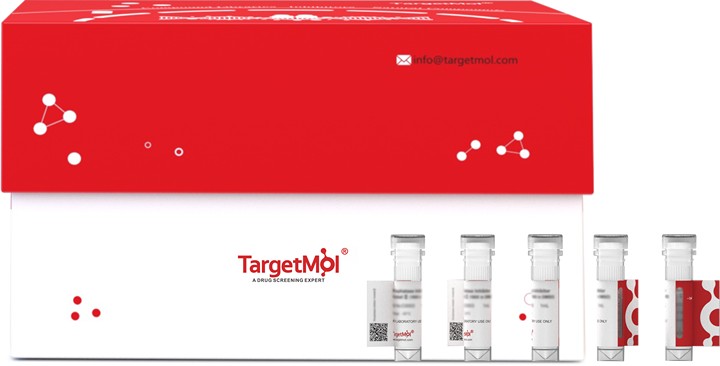Shopping Cart
Remove All Your shopping cart is currently empty
Your shopping cart is currently empty
SLC7A5 Protein, Human, Recombinant (His & Myc & SUMO) is expressed in E. coli expression system with N-10xHis-SUMO and C-Myc tag. The predicted molecular weight is 19.7 kDa and the accession number is Q01650.

| Pack Size | Price | USA Warehouse | Global Warehouse | Quantity |
|---|---|---|---|---|
| 5 μg | $105 | 20 days | 20 days | |
| 10 μg | $169 | 20 days | 20 days | |
| 20 μg | $283 | 20 days | 20 days | |
| 50 μg | $428 | 20 days | 20 days | |
| 100 μg | $590 | 20 days | 20 days | |
| 200 μg | $913 | 20 days | 20 days | |
| 500 μg | $1,620 | 20 days | 20 days | |
| 1 mg | $2,530 | 20 days | 20 days |
| Biological Activity | Activity has not been tested. It is theoretically active, but we cannot guarantee it. If you require protein activity, we recommend choosing the eukaryotic expression version first. |
| Description | SLC7A5 Protein, Human, Recombinant (His & Myc & SUMO) is expressed in E. coli expression system with N-10xHis-SUMO and C-Myc tag. The predicted molecular weight is 19.7 kDa and the accession number is Q01650. |
| Species | Human |
| Expression System | E. coli |
| Tag | N-10xHis-SUMO, C-Myc |
| Accession Number | Q01650 |
| Synonyms | y+ system cationic amino acid transporter,Solute carrier family 7 member 5,SLC7A5,MPE16,L-type amino acid transporter 1 (hLAT1),LAT1,Large neutral amino acids transporter small subunit 1,Integral membrane protein E16 (E16),CD98LC,CD98 light chain,4F2 light chain (4F2 LC;4F2LC) |
| Amino Acid | AEEKEEAREKMLAAKSADGSAPAGEGEGVTLQRNI |
| Construction | 16-50 aa |
| Protein Purity | > 90% as determined by SDS-PAGE. |
| Molecular Weight | 19.7 kDa (predicted) |
| Endotoxin | < 1.0 EU/μg of the protein as determined by the LAL method. |
| Formulation | If the delivery form is liquid, the default storage buffer is Tris/PBS-based buffer, 5%-50% glycerol. If the delivery form is lyophilized powder, the buffer before lyophilization is Tris/PBS-based buffer, 6% Trehalose, pH 8.0. |
| Reconstitution | Reconstitute the lyophilized protein in sterile deionized water. The product concentration should not be less than 100 μg/mL. Before opening, centrifuge the tube to collect powder at the bottom. After adding the reconstitution buffer, avoid vortexing or pipetting for mixing. |
| Stability & Storage | Lyophilized powders can be stably stored for over 12 months, while liquid products can be stored for 6-12 months at -80°C. For reconstituted protein solutions, the solution can be stored at -20°C to -80°C for at least 3 months. Please avoid multiple freeze-thaw cycles and store products in aliquots. |
| Shipping | In general, Lyophilized powders are shipping with blue ice. Solutions are shipping with dry ice. |
| Research Background | The heterodimer with SLC3A2 functions as sodium-independent, high-affinity transporter that mediates uptake of large neutral amino acids such as phenylalanine, tyrosine, L-DOPA, leucine, histidine, methionine and tryptophan. Functions as an amino acid exchanger. May play a role in the transport of L-DOPA across the blood-brain barrier. May act as the major transporter of tyrosine in fibroblasts (Probable). May mediate blood-to-retina L-leucine transport across the inner blood-retinal barrier. Can mediate the transport of thyroid hormones triiodothyronine (T3) and thyroxine (T4) across the cell membrane. When associated with LAPTM4B, the heterodimer formed by SLC3A2 and SLC7A5 is recruited to lysosomes to promote leucine uptake into these organelles, and thereby mediates mTORC1 activation. Involved in the uptake of toxic methylmercury (MeHg) when administered as the L-cysteine or D,L-homocysteine complexes. Involved in the cellular activity of small molecular weight nitrosothiols, via the stereoselective transport of L-nitrosocysteine (L-CNSO) across the membrane.; (Microbial infection) In case of hepatitis C virus/HCV infection, the complex formed by SLC3A2 and SLC7A5/LAT1 plays a role in HCV propagation by facilitating viral entry into host cell and increasing L-leucine uptake-mediated mTORC1 signaling activation, thereby contributing to HCV-mediated pathogenesis. |
| Size | Quantity | Unit Price | Amount | Operation |
|---|

Copyright © 2015-2026 TargetMol Chemicals Inc. All Rights Reserved.